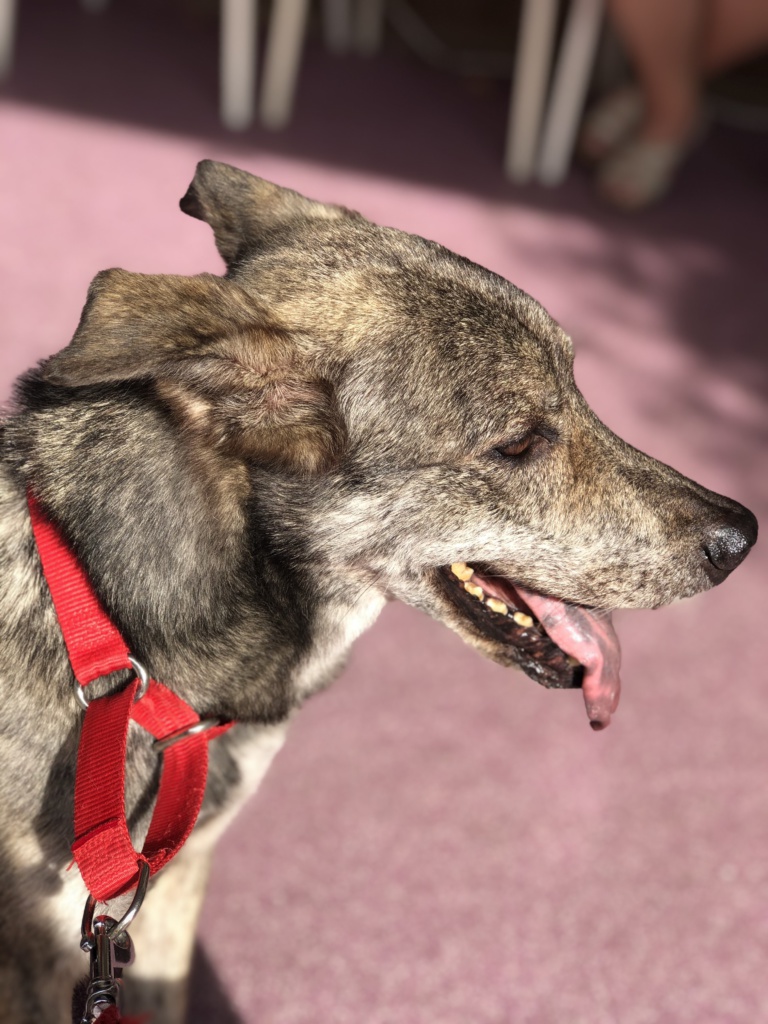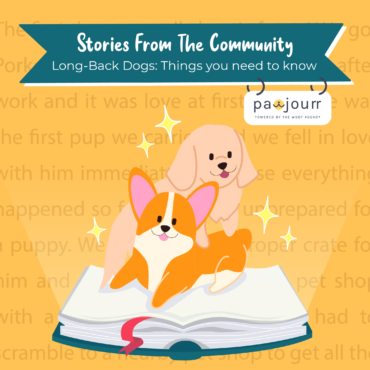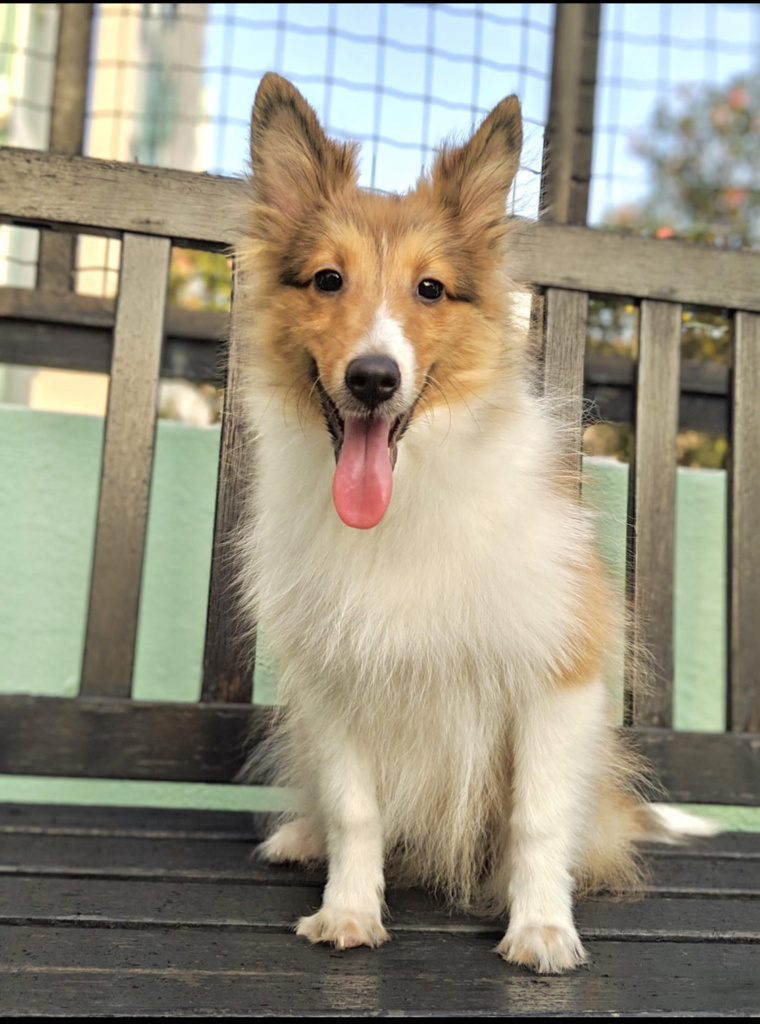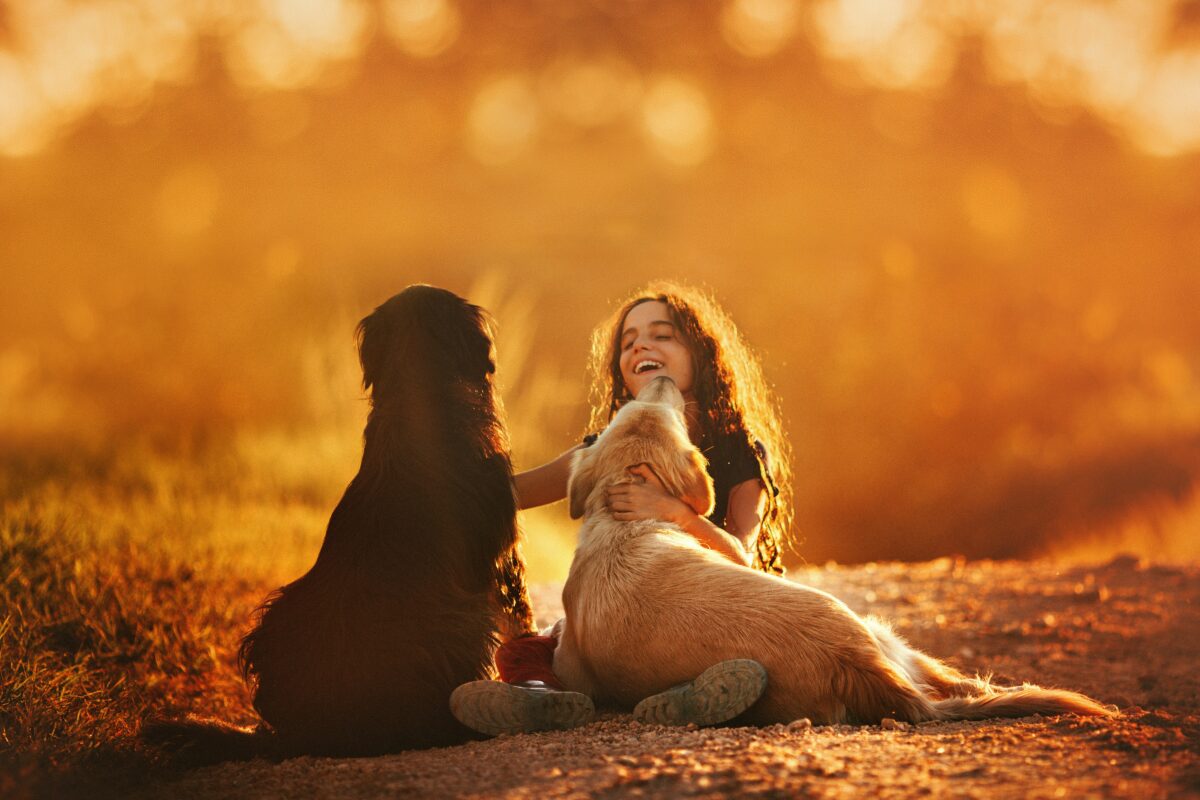Ever wondered what the life of an assistance/guide dog was like? The Woof Agency had the chance to speak to Isabella, a visually impaired woman who lives her life with O’Hara, her guide dog.
Read on to learn about how the process of obtaining a guide dog, key distinctions between the various types of assistive dogs, and some do’s and don’ts when it comes to interacting with them!
Could you tell us more about your story with O’Hara?
When I was 6-years-old I started losing my eyesight to a rare genetic juvenile form of macular degeneration, called Stargardt’s Disease. This disease is progressive, so after a few years of having it it made me be considered blind. Throughout my life, I have taken classes for the blind called Orientation and Mobility. These lessons are taught by a professional, and helps teach blind individuals how to travel independently, and use a white mobility cane. This was very important because in order to work with a guide dog, an individual must be blind and also must have exceptional mobility skills (know how to travel by themselves). In 2018 I trained at the campus of Guiding Eyes for the Blind in Yorktown Heights, New York for 3 weeks to learn how to work with O’Hara as a team.
I had to go through an extensive and detailed application process, in order to be considered to receive a guide dog. O’Hara was not specifically trained for me. However, she was trained for 2 years prior to us meeting on how to lead someone who is blind and be their eyes. We ended up being a great match, and have been working together ever since.
What is Guiding Eyes?
Guiding Eyes for the Blind is a non-profit organization that has been training exceptional highly trained guide dogs (dogs trained to help lead the blind) since 1954. Through donations, volunteers, and word of mouth they are able to provide guide dogs to those with sight loss for free, despite the dog costing around USD$50,000 to breed, train, raise, and place with someone who is blind.
What is an assistance/service dog? What are the different types of assistance/service dogs?
A service dog is a type of assistance animal (not all assistance animals are service animals) that is specifically trained to perform tasks/work that directly mitigates the disability of someone who is disabled.
Comfort and emotional support are helpful to those who need them, but do not legally qualify as trained work or tasks. Therefore therapy dogs and emotional support animals are not legally considered service dogs, and do not have the same legal protections as a service dog.
What are the tasks of an assistance/service dog?
Trained tasks/work can include, but is not limited to: Guiding someone who is blind, alerting someone before a medical episode happens, retrieving medication or reminding someone to take the medications, interrupting self harmful behaviour, finding help for someone who has had a medical episode, etc. O’Hara is a guide dog, which is a type of service dog that is trained to help lead those who are blind. Her tasks include helping me get from point A to point B, finding door/chairs/locations for me, stopping at street crossings/any change in footing/steps/curbs, guiding me around obstacles, and essentially being my eyes.
How can a dog become an assistance/service dog?
Any breed of dog can be a service dog in the USA. The dog does not need to be professionally trained, but does need to be trained to meet the ADA’s (American’s with Disabilities Act) behavioural qualifications for a service dog. The dog needs to be house trained, temperament tested & and is not allowed to be/show aggression, know at least one task or be trained work that directly mitigates someone’s disability (cannot be comfort or support). They must be under the control of their handler at all times, and the handler must be classified as “disabled” by the ADA’s definition. It is very hard to become a service dog, and training typically takes one and a half, to two years before a dog is considered “fully trained.”
Not every dog is capable of becoming a service dog, due to it being so difficult. It should be noted that training & the handler being disabled is what makes a service dog a service dog, not a vest. In the USA a service dog is not required to wear a vest, harness, or anything “identifying” them as a service dog. It is the training that makes them what they are. A normal dog could wear a vest, and that does not make them a service dog. Service dogs are considered medical equipment by federal law, and are not legally pets.
Legally there are only two questions that can be asked in public, however they can only be asked if the answers are not obvious. The first question being “is that a service dog required because of a disability?” The handler would answer that with a yes, or a no. No further details may be asked about that question. For example, it cannot be asked what that persons disability is. The second question is “what tasks or work is the dog trained to perform?” The handler would give whatever answers applies to them.
The tasks or work may not be asked to be demonstrated. Because the USA does not have a registry or certification for service dogs, someone is not allowed to “see ID, or papers.” If the person says their dog is for comfort, calms them down when they get upset, or is for support that is not a service dog, and therefore they can be asked to leave.
No dogs are allowed to ride in shopping carts, even if it is a service dog. The dog must be under control at all times, and may not be causing a disruption in business such as excessive barking. If you want to interact with a service dog, it is always best to ask before doing so.
What are the dos & don’ts when people see a service dog in public?
If a handler says that it is not a good time, it is important to respect that and not take it personally. It is dangerous to the life of the handler, and the training of the dog to attempt to distract a service dog from working.
Examples of distraction include: petting without asking, talking to the dog without asking, making sounds at the dog like kiss noises, prolonged direct eye contact with the dog, feeding the dog, calling the dog’s name, whistling at the dog, or any form of attempting to get the dog’s attention.
Again, it is best to just ignore the dog and if you really want to interact it is essential to always ask first. The handler decides when the dog is not working, so even if the dog looks like it is just laying there it could be still performing its life saving job. It is equally important to note that service dogs get lots of time to play , and to just be a dog when they are not working. Thee dogs are not forced to become a service dog, nor are they forced to stay a service dog. These dogs LOVE working, and are happy doing it.
What are some misconceptions people have of service dogs?
Some misconceptions include:
Thinking service dogs are aggressive: In actual fact, they’re legally not allowed to be aggressive.
All types of assistive dogs are the same: This is false as well, as there are very different tests and procedures included and there are different requirements for each type of assistance animals.
Anyone can have a service dog: You need to not only have a disability, but also need to be considered “disabled” by the ADA’s definition.
Service dogs are pets/You only need ID’s to be considered service dogs: Not true, as you essentially need to have proper training in order to be classified as a service dog.
Additionally, not all service dogs are guide dogs, as there are many types of assistive dogs. It’s important to also note that stores are not allowed to deny a service dog access such as supermarkets or other commonly used places. However, they tend not to be allowed in more sterile locations such as hospital operating rooms or religious places of worship, based on the discretion of the person in charge.
—
THE WOOF AGENCY would like to thank Isabella for sharing about her experiences with O’Hara & Guiding Eyes.
Enjoyed this article? Let us know what other stories you’d like to hear about in the comments below!

















